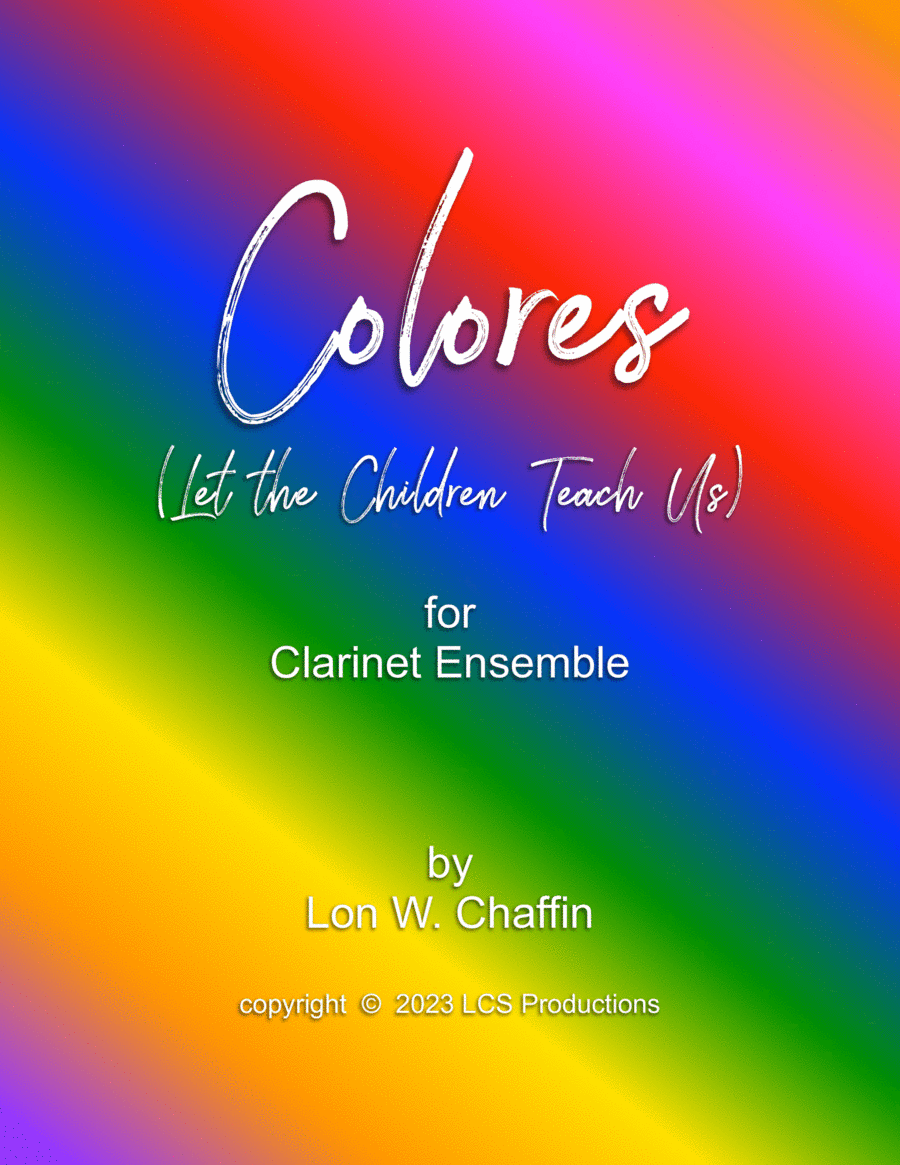Woodwind Ensemble Bass Clarinet,E-Flat Clarinet - Level 4 - Digital Download SKU: A0.1256884 Composed by Lon W. Chaffin. 21st Century,Chamber. 71 pages. LCS Productions #850272. Published by LCS Productions (A0.1256884). Imagine a place where cultures are blended and people of all races can laugh, play, sing, dance, and even pray together.  Colores is a musical tale in which children show us how to create such a place.A child walks on to a deserted playground, looking for others.  Another child joins.  They introduce themselves and begin to talk to each other.  A third joins the conversation, then another, and another, until there is a large group of children, creating a colorful, contrapuntal cacophony of vocal chatter.  After the introductions and lively conversations, they pause to decide what to do next.  As would be expected, they decide to just play.  They run races, play chase and tag, catch and kickball, and laugh and giggle until their energy is gone.  Settling down, and wondering what to do next, one child begins singing a tune that is familiar.  …but not to all of them.  So, it’s time to teach the song to everyone.The tune is shared, bit by bit, and one by one every child learns it and joins in.  Before it’s over, their full-voiced singing creates a choral tapestry in which every child adds his or her own color to the musical palette.After a brief conversation, they add their renewed energy to the song they just learned, pick up the pace, and dance.  They twist and spin, jump and swing, making up their moves as they go along.  But, as before, their energy wanes.  This time, as they settle down, one child feels so comfortable with these new friends, he chooses to share his faith in the form of a chant — a prayer.Some join his prayer, as others add a familiar religious tune.  They pray and sing, and their separate experiences combine to produce a stirring, blended chorale.  As they finish, the day ends and they quickly reminisce about the blended experiences that are now behind them.  Before they go their separate ways, they share a moment of gratitude for the place where they can be free to be who they are, together.On a musical note, Colores combines multiple scale structures and varying types of vertical harmonies to give the piece its color palette.  Each of the five voices is set in a different mode, with different tonal centers and sets of accidentals.  The harmony combines both traditional tertian chords with secondal, quartal, and quintal structures.The colors within the music are intended to represent the racial diversity of the borderland from which the composer drew his inspiration.  It is hoped that we can learn from the example of children who talk, laugh, play, sing, dance, and pray together.  …who are grateful for the time and experiences they share.
